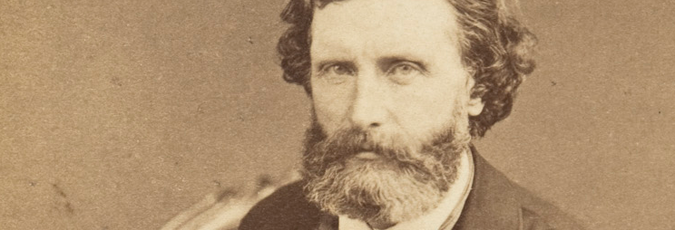Early life
Frederic William Burton was born in Ireland in 1816. He began his artistic training at the Dublin Society Schools at the age of 10, and became an accomplished water-colourist and miniature painter, exhibiting his first picture at the Royal Hibernian Academy at the age of 16.
Antiquarianism and archaeology
In the 1830s Burton developed friendships with a number of Irish antiquarians such as George Petrie and Samuel Ferguson. He and Petrie travelled along the west coast of Ireland, sketching. Here Burton developed an interest in Irish history and folk life; subjects that he explored in his paintings (e.g. ‘Aran Fisherman’s Drowned Child’, 1841, now at the National Gallery of Ireland).
Burton later became a founder of the Irish Archaeological Society and was involved in the founding of the National Gallery of Ireland around a collection of casts of antique sculpture. In 1863 he was elected a fellow of London’s Society of Antiquaries. He published on antiquities and was a supporter of the Egypt Exploration Fund, founded in 1882.
Travels in Germany
In the 1840s and ‘50s Burton travelled extensively in Bavaria, sketching and painting folk life and architecture and reputedly worked for Maximilian II of Bavaria, copying and restoring his art collection at Munich. On these travels he became familiar with continental art history and museums.
Move to England
Burton moved to London in 1858. Initially, he continued to practise as a painter, taking on portrait commissions and continuing with subject painting. The paintings of the Pre-Raphaelites had influenced Burton’s own work and in London he developed friendships with members of the group including Edward Burne-Jones and John Everett Millais. Burton was appointed Director of the National Gallery in 1874 and ceased to paint entirely.

